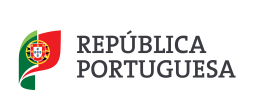The curricular unit of New Media Art aims to articulate the theoretical and historical framework of New Media Art and computational programming as a flexible working tool and methodology.This interplay of Art and Technology harmoniously accommodates contemporary artistic discourse, in a symbiotic articulation between contemporary art practices and the instruments inherited from the exact sciences.It begins with an archeology of medial art, recognizing the threads that weave the current artistic creation, both in its themes, in its expressions, and also in its applications that do not alwayshave artistic ends. The programming is presented in a reverse way, bypassing its internal mechanisms and its alphanumeric dimension in an initial moment, focusing primarily on audiovisual results and initiating a logical deconstruction of these events down to their most basic components.
At the end of the course, students should be able to:
a) Recognize New Media Art diachronicly and synchronously.
b) Demonstrate theoretical, aesthetic and practical knowledge about New Media Art.
c) Develop critical thinking about New Media Art.
d) Understand and master programming as an artistic production tool and methodology.
e) Establish a harmonious practice with the programming so that it will integrate the individual range of sketching, simulation, prototyping and pre-production tools in the student's creative process.
f) Master the transcription of plastic, kinetic, visual or sound problems and challenges in elementary components, which can be described and re-synthesized throughcomputational programming, comprising, in these processes, the material limitations and possibilities inherent to the medium in question.
g) Approach programming as a set of strategies for exposure, organization and problem solving that is not extinguished in the computational domain.
h) Understand and verify the relevance of programming as a hinge element of contemporary culture, and specifically of artistic production.




